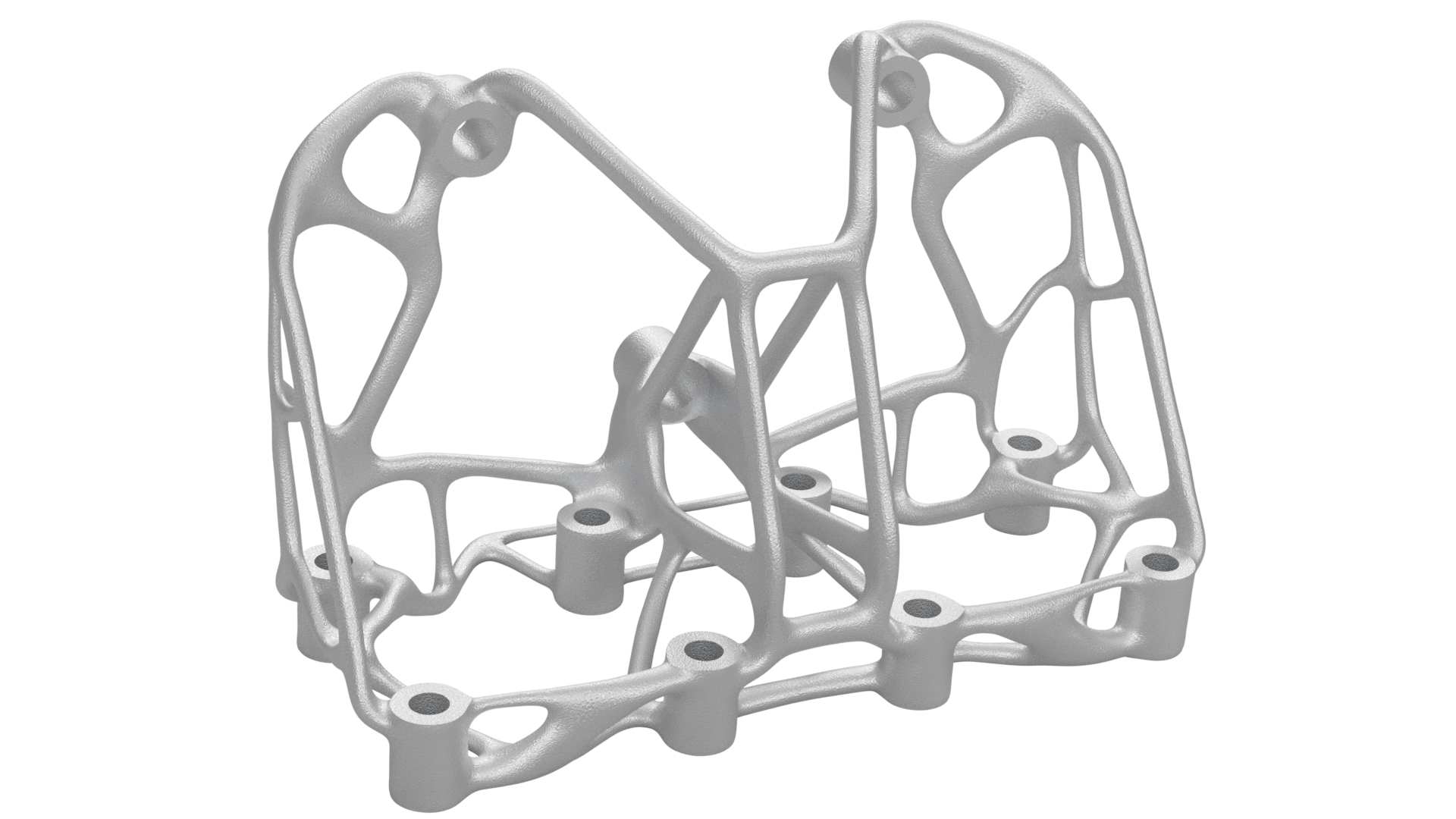How we develop components
Simulation replaces CAD-construction

Load & design space definition
Based on existing information such as CAD data, values for applied forces and pressures, information on masses and directions of motion, or photos and videos of your application, the maximum available installation space is designed and the finite element model with all load cases is built. Ideally, simulation models and design spaces already exist. In general, the more data provided, the closer the result is to the optimum.
Topology & shape Optimization
Topology and shape optimizations are performed within the developed design space. For the given load cases, the geometry is optimized under suitable restrictions with regard to the optimization objective, e.g. minimizing the mass. During this process, all constraints are defined keeping in mind the desired production process to ensure manufacturability. Both conventional manufacturing processes such as casting and milling as well as additive manufacturing processes (3D printing) can be taken into account. No further information is required on your part.


Geometry return
In order to preserve the optimized result of the topology and shape optimizations, further steps are taken directly on the output of the solver. The generated density distribution is fed into a parameterizable geometry, which can then be further used in all commercial CAD programs. The new geometry is a fully functional solid model, which can be exported as a STEP file, for example. The deviation between the result of the topology optimization and the final component’s geometry is very small due to the elimination of the manual post-design work.
FE-Reanalysis
The result of the optimizations is then finally validated. Various simulations are considered. On one side, fatigue analyses are carried out to ensure the safe operation of the component, and on the other side, process simulations are performed to enable cost-effective and trouble-free production. Depending on the application, additional properties such as NVH behavior or thermal resistance can be taken into account. At the same time, these properties can also be prescribed as part of the optimization.

Result
The result is an optimal, fatigue-proof component that can be manufactured reliably and cost-effectively in the selected manufacturing process. Every component structure has a function. Maximum performance at minimum cost.
- Minimal weight
- Minimum production costs
- Highest stiffnes
- Ideal thermal behavior
